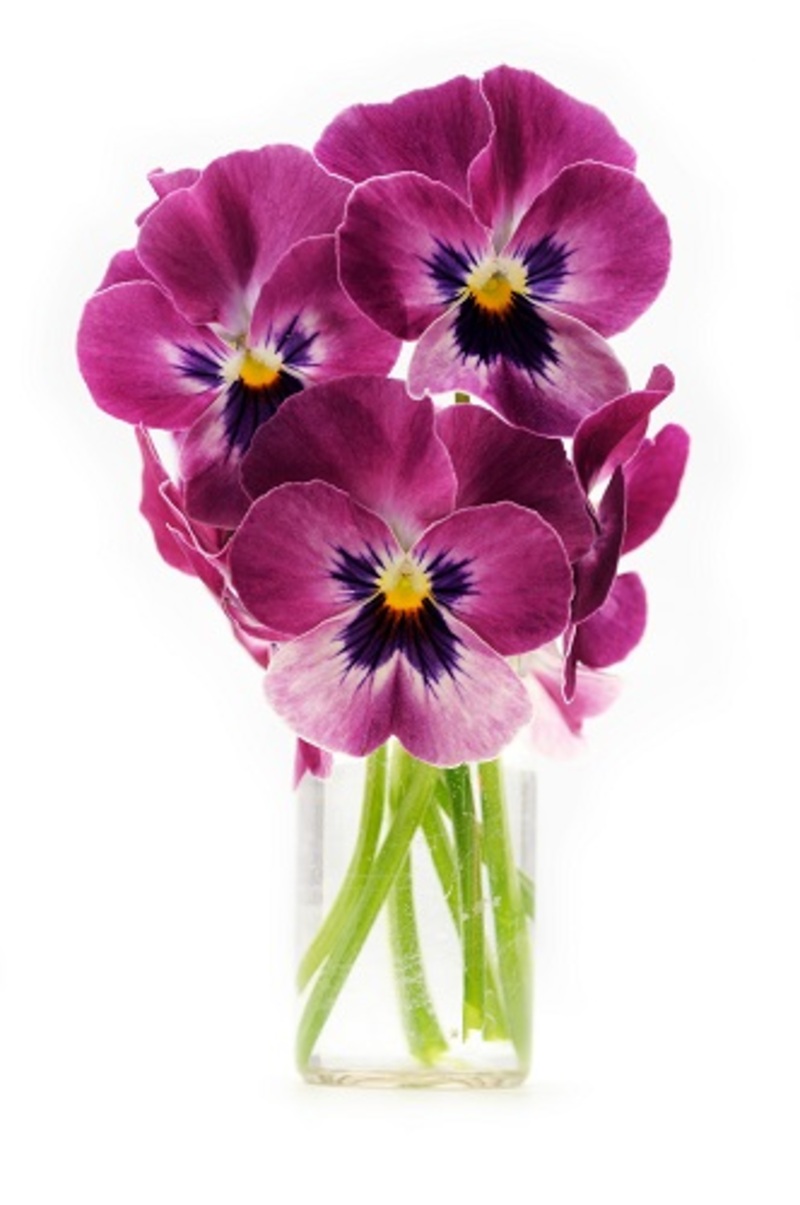Explore 3 easy approaches for prolonging floral life
Posted on 03/07/2025
Explore 3 Easy Approaches for Prolonging Floral Life
There's nothing quite like the bright beauty of fresh flowers lifting the ambiance of any room. However, one universal challenge is prolonging floral life to sustain that beauty for as long as possible. If you've often wondered how to make flowers last longer, look no further! This comprehensive guide explores three simple yet highly effective techniques to extend your bouquet's vitality. Read on for easy-to-implement flower care strategies, expert tips, and fascinating insights into the science of keeping blooms fresh and vibrant.


Why Prolonging Floral Life Matters
Cut flowers serve as gorgeous centerpieces, heartfelt gifts, or a treat for yourself. But their transient nature can often lead to disappointment when they wilt prematurely. By increasing the lifespan of flowers, you can:
- Maximize the value of your purchase or gift.
- Enjoy vivid colors and fragrance for days longer.
- Reduce waste and the frequency of replacing bouquets.
- Enhance your decor with lasting freshness.
Adopting simple flower preservation techniques can make a remarkable difference in how long your floral arrangements remain stunning.
Table of Contents
- 1. Proper Preparation: The Foundation for Long-Lasting Flowers
- 2. Creating the Ideal Vase Environment
- 3. Effective Nourishment: DIY Flower Food Solutions
- Frequently Asked Questions on Prolonging Flower Lifespan
- Conclusion: Refresh and Revitalize Your Flowers
1. Proper Preparation: The Foundation for Long-Lasting Flowers
Before you even arrange your bouquet, the steps you take immediately after receiving or buying cut flowers play a vital role in prolonging floral life. Think of this as laying the groundwork for your blooms to thrive.
Unbox and Assess Immediately
- Unpack flowers as soon as possible after purchase or delivery. Leaving lilies, roses, carnation bouquets, or any cut flowers in wrapping for too long may deprive them of air and moisture.
- Check for wilting, bruised, or damaged petals and leaves. Remove any that show signs of decay to prevent them from affecting the healthy parts of your arrangement.
Make a Clean, Fresh Cut
- Use sharp, clean scissors or floral shears and trim stems at a 45-degree angle under running water. Cutting at an angle increases the area for water absorption and prevents the stems from resting flat at the bottom of the vase, which would impede hydration.
- Why underwater? Cutting underwater stops air bubbles from entering the stem, which can block water uptake--a process known as "embolism."
Strip Off Excess Foliage
- Any leaves that will be submerged under water in your chosen vase should be removed. Submerged foliage decomposes quickly, contributing bacteria to the water, which shortens the floral lifespan.
Give a Quick Rinse
- Rinse the stems and petals with clean, fresh water to remove any lingering dirt, pesticides, or bacteria, creating the best possible starting condition for your bouquet.
2. Creating the Ideal Vase Environment
Once your flowers are properly prepped, the environment you provide will ultimately determine how long cut flowers last. Everything from water quality to the vase location plays a key role in prolonging the beauty of your blooms.
Use the Right Vase
- Always choose a clean vase--preferably glass or ceramic. Residue from previous arrangements harbors bacteria.
- The vase should be tall enough to support the stems but wide enough not to crowd them, ensuring good air circulation and hydration.
Fresh, Filtered Water Is Key
- Fill your vase with lukewarm, filtered or distilled water. Many municipal tap waters contain chemicals such as chlorine or fluoride, which can be detrimental to fragile flower heads. If you must use tap water, let it stand for 1-2 hours before using.
- For bulb flowers like tulips and daffodils, cooler water is preferable, as it slows down their metabolism.
Change Water Frequently
- Replace the water every 2 days at minimum. This removes bacteria and keeps hydration levels optimal.
- Each time you change the water, rinse the stems and re-cut the ends to ensure maximum water absorption.
Location, Location, Location
- Keep your arrangement away from direct sunlight, heat sources, and drafts, such as radiators, stoves, and air conditioning vents. These can dry out and stress the flowers, causing them to wilt.
- Avoid placing arrangements near ripening fruits. Fruits like bananas and apples give off ethylene gas, which can dramatically reduce floral longevity.
Remove Wilting Flowers Promptly
- As some flowers start to fade, remove them from the arrangement right away. Decaying plant matter introduces bacteria and mold, which can contaminate the water and harm the remaining healthy flowers.
3. Effective Nourishment: DIY Flower Food Solutions
A little science goes a long way in extending the life of beautiful blooms. Flower food involves balancing three key elements: carbohydrates (for nutrition), acidifiers (to maintain water pH), and biocides (to control bacteria).
Understanding Commercial Floral Preservatives
- Most professional florists provide a sachet of "flower food" with each bouquet. These contain a specific combination of sugar, acidifiers (like citric acid), and a small amount of bleach or biocide.
- If you have a sachet, follow the directions precisely. Too much can harm flowers, while too little delivers few benefits.
Easy DIY Flower Food Recipes
Can't find the sachet? Create your own homemade flower food by combining common ingredients:
-
Recipe 1 (Classic):
- 2 cups lukewarm water
- 2 tablespoons lemon juice or white vinegar (*acidifier*)
- 1 tablespoon sugar (*carbohydrate*)
- 1/2 teaspoon bleach (*biocide*)
-
Recipe 2 (Citrus Blend):
- 4 cups water
- 3 tablespoons fresh orange juice or lemon juice
- 1 tablespoon sugar
- 1/2 teaspoon household bleach
*Mix until dissolved and add to your cleaned vase. These mixtures feed the flowers, limit bacteria, and maintain acidity, all of which help prolong your floral arrangements' life.
Popular Flower Life Myths (And What Works)
- Adding aspirin: It can lower water pH, but is less effective than citric acid or vinegar.
- Pennies in the vase: Copper's antibacterial properties offer minimal impact unless the water is acidic.
- Vodka or spirits: Effective in very small doses as a biocide, but overdosing harms flowers.
- Sugar alone: Without the acidifier and biocide, bacteria multiplies and harms flowers.
For best results, rely on the three-component recipe: sugar, acid, and biocide.
Frequently Asked Questions on Prolonging Flower Lifespan
-
How long will cut flowers last with proper care?
With the right preparation and maintenance, most cut flowers can last from 7 to 12 days. Some varieties like chrysanthemums and carnations may persist for two weeks or longer, especially with consistent water changes and flower food. -
Which flowers naturally last the longest?
Chrysanthemums, alstroemeria, orchids, and carnations are among the most resilient, staying fresh for extended periods with appropriate care. -
How can I revive wilted flowers?
Re-cut stems under water, remove lower leaves, refresh the water and add flower food. Sometimes, placing stems in warm (not hot) water can revive slightly limp blooms. -
Is it necessary to refrigerate flowers?
Refrigeration can prolong cut flower life, but for most home arrangements, a cool, shaded spot is sufficient. Avoid extreme chills that can damage delicate petals.
Conclusion: Refresh and Revitalize Your Flowers
With just a little extra effort and attention to detail, you can keep your flowers fresh for days longer. To recap, the three easy approaches for prolonging the life of your cut flowers are:
- Proper preparation--unboxing, trimming, and prepping your stems immediately after purchase.
- Creating an optimal environment--clean vases, fresh water, and thoughtful placement out of direct sunlight and away from ripening fruit.
- Providing effective nourishment--using commercial or homemade flower food to keep blooms hydrated and bacteria-free.
If you follow these three simple steps, your flower arrangements can become a dazzling, long-lasting focal point in your home or office. No more sad, slumped leaves or quick goodbyes to favorite bouquets. Explore these approaches today and discover just how easy preserving the beauty of flowers can be!
Want More Flower Longevity Tips?
- Experiment with different flower varieties to see which ones last longest in your space.
- Regularly clean your scissors and shears to prevent bacteria transfer.
- Share your flower care stories with friends or on social media to spread the floral joy!
Prolonging the life of your fresh flowers doesn't have to be complicated. By embracing these simple, science-backed strategies, you'll consistently enjoy lush, beautiful bouquets much longer.
Let your flowers thrive--start implementing these approaches today for months of blossoming beauty!
Latest Posts
5 Most Popular Flowers to Surprise Your Valentine
Delving into the World of Peony Flowers: Symbolism and Color Insights
Transform Your Home with Expert Orchid Care Tips





